Getting access to the internet while you’re cruising through the clouds is a true testament to the ingenuity of humanity. In-flight wi-fi is one of my favorite inventions of the past decade and I’m guessing you’ll agree. Instead of being forced to devote our time to stupid tasks like reading (bo-ring!), we can now see if any of the Kardashians have died or posted photos of their bodyparts on Instagram while we fly. What a world we live in! I love wi-fi on airplanes — assuming the signal is strong enough — and so do the folks at Gizmodo who put together this handy guide to all of the major US carriers and their on-board internet offerings. The list is ranked from first to worst:
1. JetBlue
JetBlue’s wifi is probably the fastest in the sky. Its “Fly-Fi†uses the latest Ka-band technology from ViaSat and clocks in at around 15Mbps. However, there’s no guarantee it will be available on your plane. All of the JetBlue’s Airbus 321 aircraft and 80% of its A320 aircraft have it. The rest of the fleet should be equipped this year. Before you book, check to see if your flight has Fly-Fi on JetBlue’s dedicated website.
2. Virgin America
Virgin America wins out as the second best airline for wifi simply because the crazy-fast Gogo ATG-4 service is available on the airline’s entire fleet. (Virgin flies Airbus 319s and A320s.) The service will get even faster this year, as Virgin is a launch partner for Gogo’s new 2Ku service, though it’ll roll out on transatlantic flights first. Virgin America is currently the only airline with wifi on every plane—just hope it’s not broken when you fly. Gogo’s pricing is standardized at $5 per hour, $16 per day, and $60 for a full month pass (or $50 if you want that pass for just one airline). This pricing structure is the same for any airline that uses Gogo.
3. Delta
Delta is neck-and-neck with Virgin in terms of availability, since its entire fleet is wifi-equipped. There’s a spectrum of quality and speed, though. It’s all Gogo ATG and currently being upgraded to ATG-4. So for the widebodied Boeing aircraft and the Airbus A319s have the faster 2Ku-powered systems, and it will be rolled out to the rest of the fleet this year. Check your flight’s wifi status on Delta’s MyTrips website.
4. Southwest
Surprise! The fun-loving airline that once felt like riding a public bus through the sky has a pretty damn great wifi setup. Southwest’s proprietary system is notable because it works from gate-to-gate (for the most part). Southwest only flies Boeing 737 aircraft, and about a third of the fleet is equipped with Ku-band wifi provided by a company called Row44. For $8 a day, the wifi service is pretty fast, and since it’s satellite-based, the internet won’t cut out when you fly over bodies of water. You also get a bunch of free TV content when you connect. However, you could easily end up on a plane that’s not equipped with wifi, and not all of the wifi-equipped have power sources. Check your flight with Southwest’s wifi Finder.
5. Alaska Airlines
From here on out, pretty much every airline is using various versions of Gogo’s service, so it’s kind of a toss up. Again, it’s hard to tell exactly how slow it will be—and it will definitely feel slow compared to your wifi at home—but at least Alaska Airlines can guarantee service on every flight. (The entire fleet was supposed to be equipped with wifi as well as in-flight entertainment via Gogo by April 2015.) The airline is working on upgrading all of the equipment to Gogo’s faster ATG-4 offering, as well.
6. American Airlines
American Airlines (as well as its new partner US Airways) has pretty good wifi coverage across its fleet. It offers Gogo service on the vast majority of its aircraft but not on any of its regional jets. To see if your flight has wifi, American tells you to search the itinerary and look for a little wifi signal, which is kind of annoying but whatever. Good effort.
7. US Airways
Ditto on the the Gogo offering, as US Airways and American Airlines are now merging. It should be noted that Gogo passes purchased for US Airways will not work on American Airlines yet, but they’re working on it.
8. United
United’s wifi set up is insanely confusing. On flights from JFK to Los Angeles and San Francisco, you can get regular old Gogo service. But on other flights you might get United’s own proprietary wifi service, which will only tell you the price once you go to connect. But you might get lucky and score Ka-band wifi on some 747s and Airbus widebody jets. (This wifi is apparently great, by the way.) And then DIRECTV is somehow involved. It’s so confusing. Check your flight’s status here.
What do you think about this list? Accurate? Crazy? I’d love to hear your thoughts in the comments and please feel free to hit one of those Share buttons below to send this story out to the world.
Original story here: http://gizmodo.com/every-major-airlines-wifi-service-explained-and-ranked-1701017977
Photo:![]() Some rights reserved by Anthony Quintano
Some rights reserved by Anthony Quintano

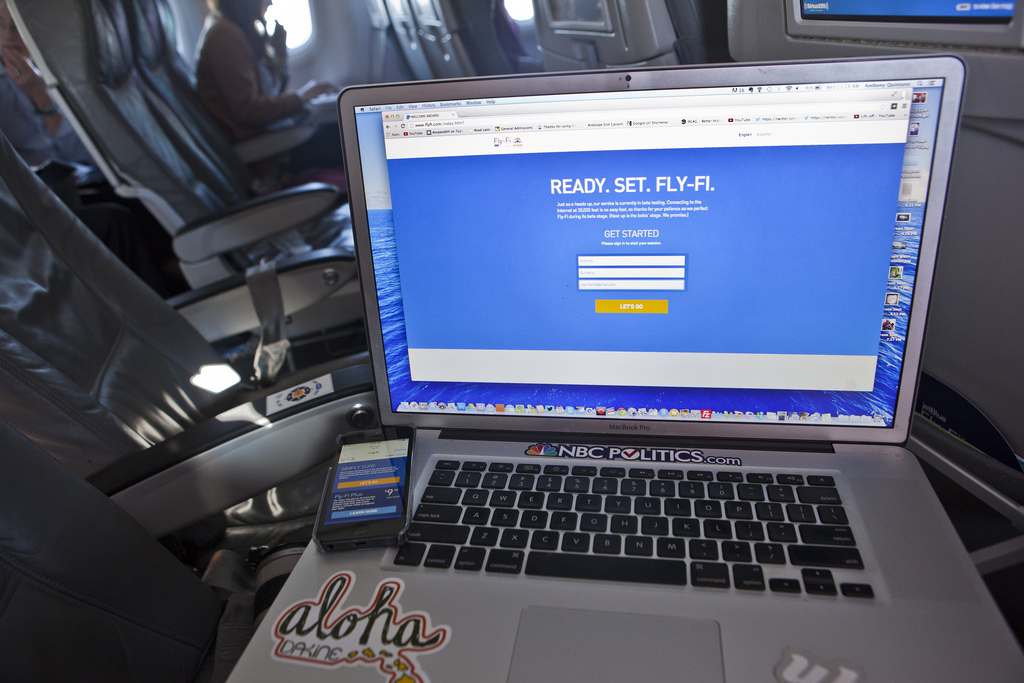
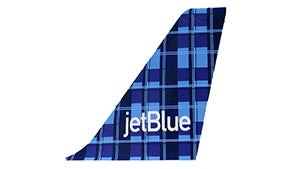

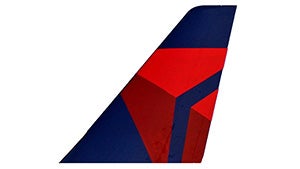
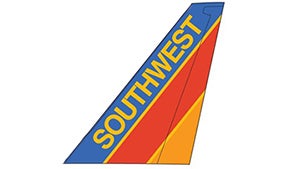
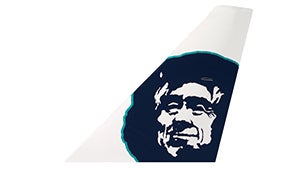
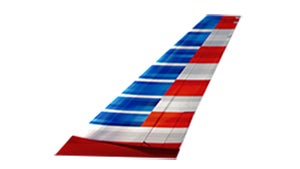
The list seems to be pretty accurate, especially that United is the worst. United is the worst at everything so they “succeed” at having the worst wi-fi as well.
Ya-but, this is an airplane foodie blog, so can you Eat Flying Wifi?
More seriously, some real thoughts about on-air services while in the air: I did read the handy guide and I think it is a bit misleading. I too would like to use Wifi while flying, but I have not for slightly over a year and will not try again, for at least another year. Some issues about my personal experiences… First, the wonderful speeds mentioned in the Handy Guide generally refer to an Entire Airplane and under Ideal conditions. Your unwashed row partner in seat 33C is NOT going to get 30Mb to himself, under any circumstances. Next, now matter what airline and provide is involved, the costs are truly horrible and they disclaim all responsibility for quality. If you connect long enough to transmit your credit card number, you pay, even if it dies two minutes later. Many services still impose Mb limits per hour/flight/day and if exceeded, will soak dear 33C even worse.
As properly noted here and in the Guide, even those airlines with 100% fleet coverage apparently have extreme difficulty keeping it all working. And broken Wifi will damn sure not ground a busy airplane! With my usual luck my trans-con aircraft for the day has broken Wifi and broken AVOD/IFE systems (and horrible food). One can partially fix the food with a “J” of better ticket, but when Wifi is broken, it affects the entire airplane; snooty seats up from do not help.
One has to love observation that while (as few) airplanes can provide reliable Wifi connections on trans-con flights, those airplanes are far too often the ones that do NOT provide any at-seat power. Got to love it; unless one has a new, fully-charged battery or a handy spare, you’re still screwed.
In my year-long personal experiment with flying Wifi, about 75% of the year’s 132 boardings were Wifi failures. The failures ranged from not available, to broken, to wholly inadequate (think too slow to use) speed, to great speed – followed by 45-60 second timeouts and a host of other problems. Of 28 requests for refunds due to dysfunctional service, a whopping FOUR were eventually granted. (The others universally suggested that I do something that is anatomically impossible). Personal experience with on-board AVOD/IFE systems, both free and a few PPV systems was better, but not by much.
Therefore… I will wait until early 2016 before I try any of them again. By then, perhaps at least a couple of them will be providing truly functional service. Maybe. And as if one needs to add more insult to what should be a viable service, at least one flying Wifi service providers manages to clog up their own system with an endless stream of full-page ads for enhancements to their own service. More often than not, I believe that they a displaying a ‘cookie frame,’ and the ‘Click to Continue’ routine just to muy themselves time to acquire and download the requested page, thus making their service appear to be faster than it really is. IMO. Flying Wifi is a wonderful idea and one that may have significant potential. I also think it was introduced to the airlines and and the public looooong before the technology was mature enough to be even 50% reliable and that the service providers are using funds derived from failed service (that should be refunded) to mature their products. While in most cases I would prefer using my laptop with Internet access while flying, I also enjoy reading and certainly do not find it “bo-ring.” The airlines and the service providers will not get their grubby little mitts on anymore of my dollars until the pass/fail ration is more than reversed. We’ve been had! While actively masticating something of interest, the interim options are additional (and better) food options and reading. For some, a few more cocktails is also an option, but I do not use the stuff.
Please, let’s get back to those ever so slowly improving airline meals… -CG
Thanks, Cedarglen. Glad to see you cooking around these parts.